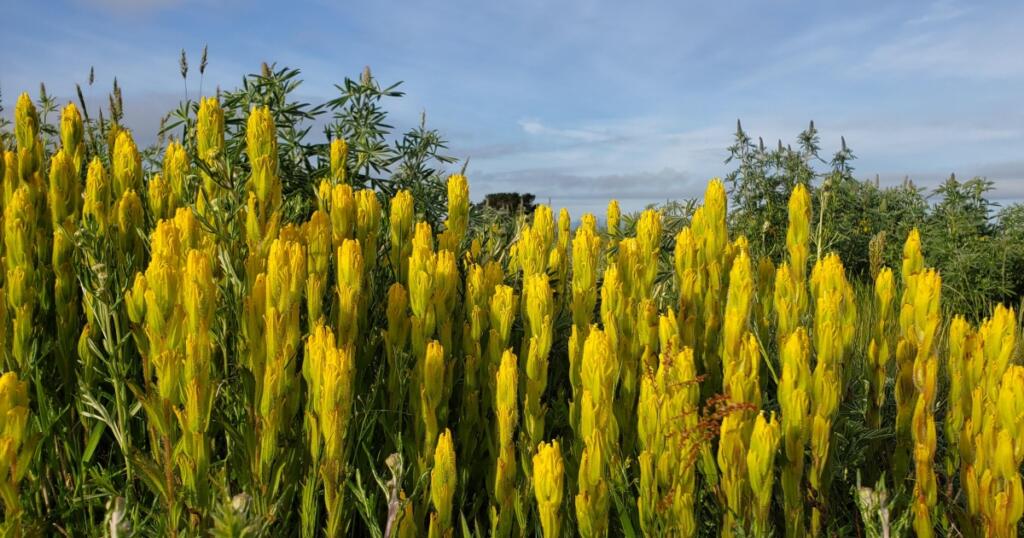SEATTLE — As the new millennium neared, only 10 places remained throughout the prairies of the South Puget Sound region where the bright, yellow flowers of the golden paintbrush could be found.
Federal officials listed the species as threatened in 1997, but now — after decades of restoration efforts — the golden paintbrush can be found in nearly five times as many places and in far greater numbers, U.S. Fish and Wildlife Service officials said.
The plant has rebounded so much that federal officials announced Tuesday they would take it off the list of threatened and endangered species, a move that coincides with the 50th anniversary of the Endangered Species Act.
“At some sites, it’s hard to walk because there are so many plants,” said Erin Gray, an endangered species biologist with Fish and Wildlife. “It’s inspiring.”
The golden paintbrush (Castilleja levisecta) stands several inches high and blooms every summer, Gray said. As its name suggests, the flower looks like a brush dipped in golden paint.
Although the plant was once plentiful across southwest British Columbia and Western Washington into Oregon’s Willamette Valley, Gray said human and agricultural development across the prairies and the suppression of wildfires natural to the areas have cut into the golden paintbrush’s habitat. By 1920, the species could no longer be found in Oregon, and by 1997 fewer than 20,000 plants remained.
Restoration efforts spanned local, state and federal officials alongside nonprofits and private landowners, Gray said. They began collecting and planting seeds and looking for suitable habitat in which to plant them.
Robert Pelant, founder and CEO of the nonprofit Pacific Rim Institute for Environmental Stewardship, said golden paintbrush seeds are so small they can be seen floating in the air.
“If you’re collecting seeds, don’t sneeze,” Pelant said.
The institute’s golden paintbrush footprint began around 2009 with just “a few square feet” and now boasts more than 15 acres peppered with the flowers, Pelant said. He estimated the area holds about 40,000 plants.
As of 2019, Gray said, the Pacific Northwest had about 325,000 golden paintbrush plants. And as of last year, as-of-yet unconfirmed estimates showed that just one site might now have as many as 300,000.
The species can be found in at least 48 different places, Gray said. More than half of those sites are in Oregon, restoring the flower to more of its traditional habitat.
Now, the species is considered recovered, but federal officials will continue to monitor its progress over the next five years, Gray said.
Restoring the golden paintbrush to the prairie lands is an important victory for biodiversity in the region, Gray said.
The flower is also what’s called a “hemiparasite,” said Del Brummet, head gardener of Seattle’s Elisabeth Miller Botanical Garden. That means the plant latches onto a host plant, sapping water and nutrients. Some evidence shows that the golden paintbrush may also return certain benefits to host plants, potentially creating a more resilient prairie ecosystem.
Bumblebees primarily pollinate the flower, Gray said, but the endangered Taylor’s checkerspot butterfly also can rely on the plant.
Andrew LaValle, a spokesman for Fish and Wildlife, said that in the 50 years since Congress enacted the Endangered Species Act, more than 50 species have recovered and more than 60 have transitioned from the dire “endangered” listing to “threatened.” More than 99 percent of the species that have been listed under the act still remain today, LaValle said.




